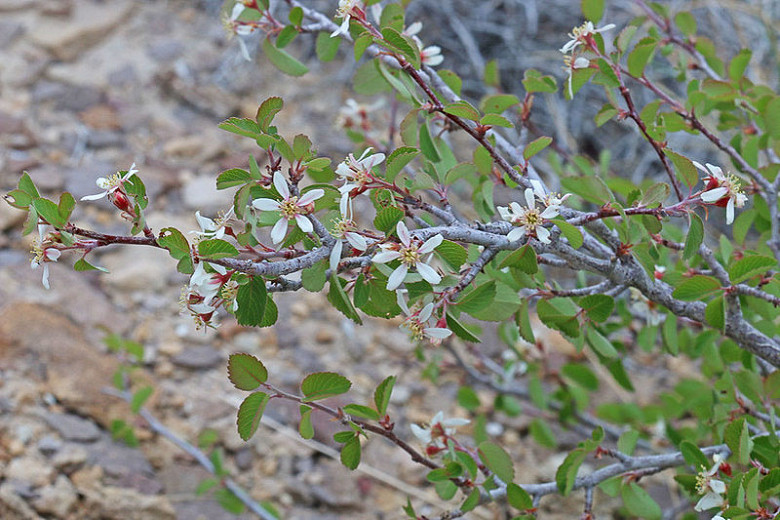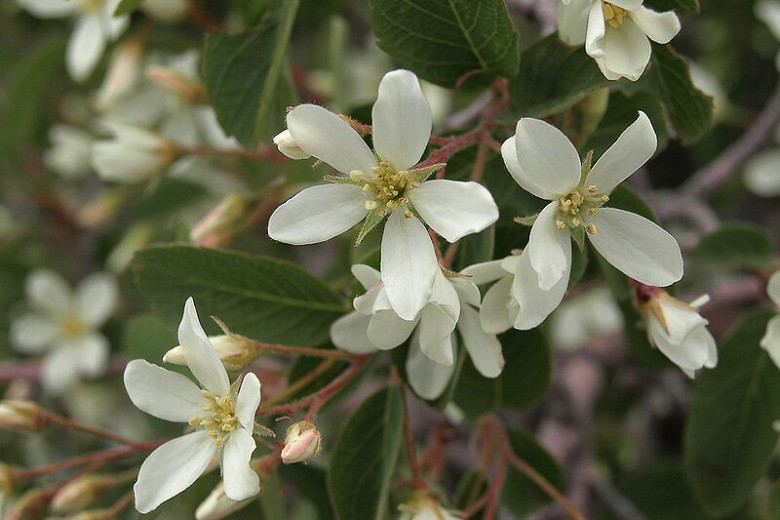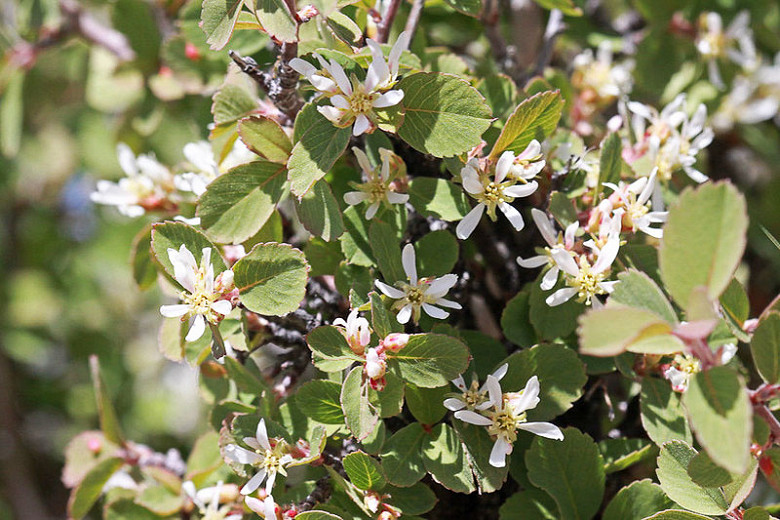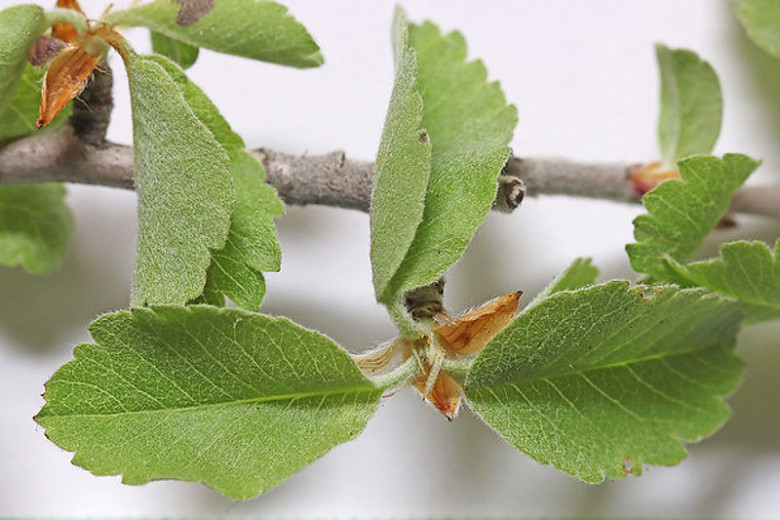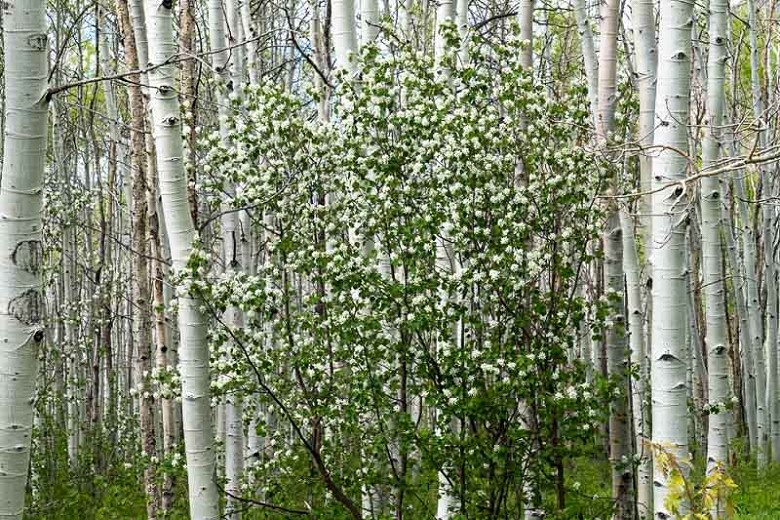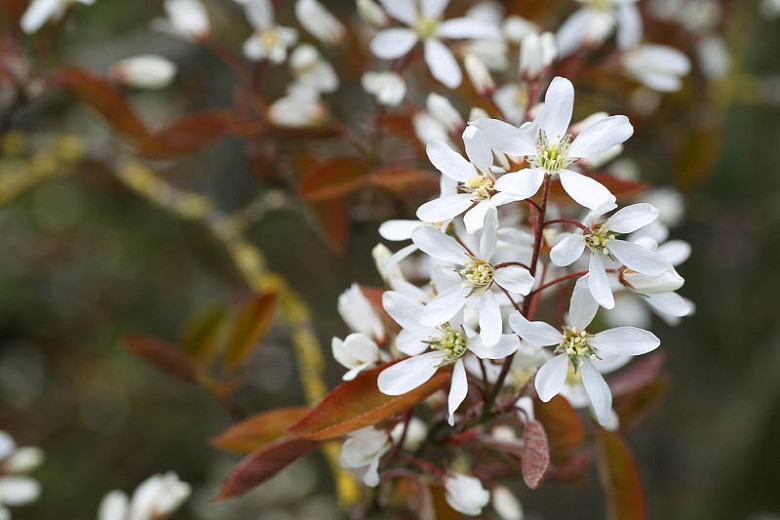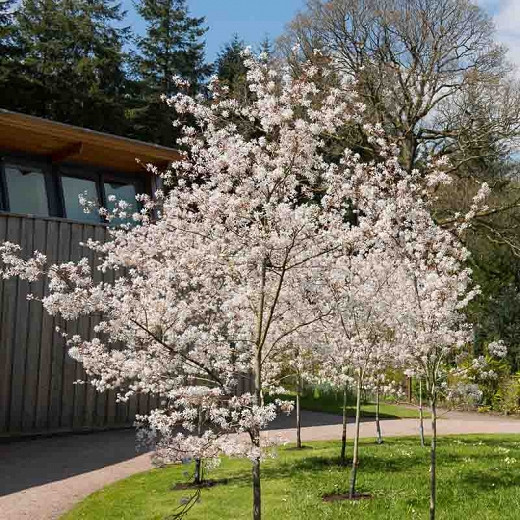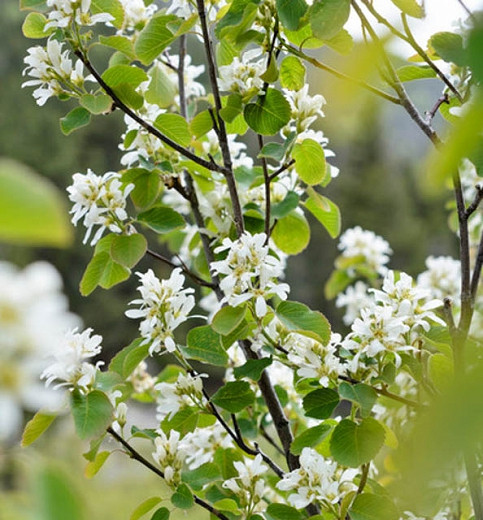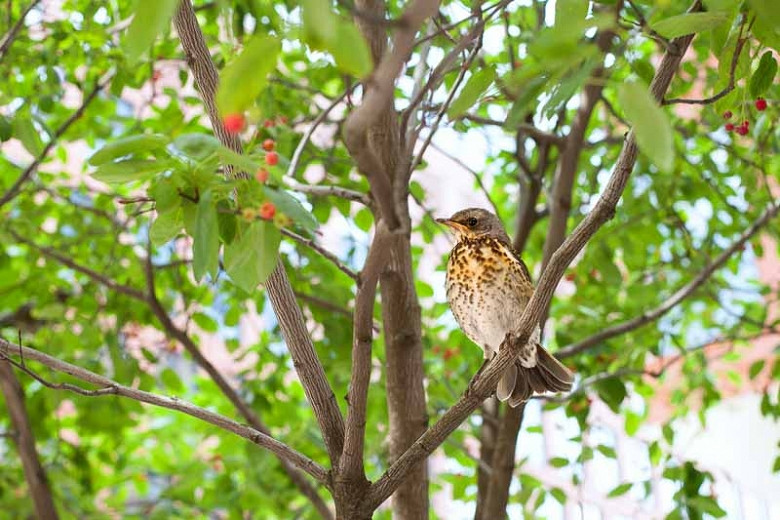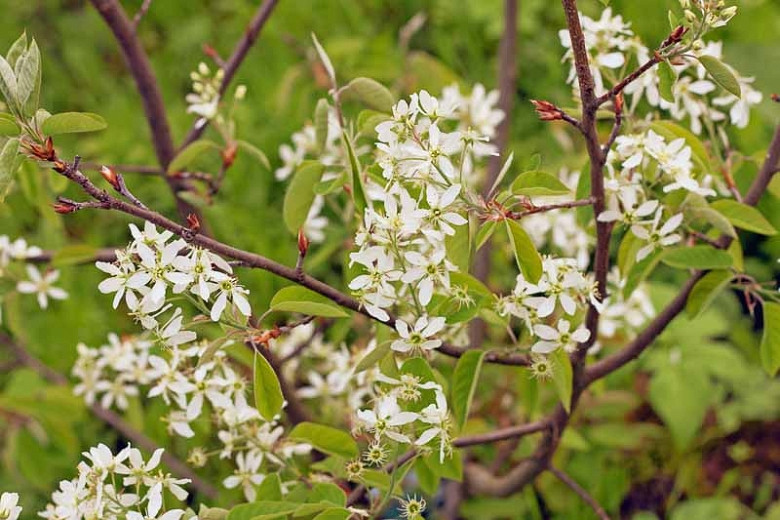Amelanchier utahensis (Utah Serviceberry)
A rewarding choice for any garden, Amelanchier utahensis (Utah Serviceberry) is a many-branched, deciduous shrub or small tree of rounded growth habit with four seasons of interest. In spring, finely serrated, green leaves alternately line the young, reddish growth and the soft gray of the smooth, mature branches. Clusters of white, rose-like flowers, each with five widely-spaced narrow petals, cover the shrub from base to tip of each branch until early summer. The entire shrub is snowy white. Their sweet nectar attracts pollinators such as bees, butterflies and other insects. They are followed by green clusters of edible, plump, juicy apple-like pomes that eventually turn to a pink or dark purple hue. They remain on the plant throughout the summer and into fall – if birds do not feast on them – where they contrast with the golden foliage. Native to a large portion of the dry northwestern and southwestern regions of the United States, and dipping into northern Mexico, Utah Serviceberry occurs in varied habitats, from mesas, canyons, rocky slopes, scrublands and along roadsides to woodlands. Utah Serviceberry is an important browse and food plant. The branches and leaves are eagerly browsed by desert bighorns, elk, and mule deer, as well as many birds and domesticated livestock. Utah Serviceberry also offers protective cover and nesting materials for birds and small mammals. Noted for its long-term visual attraction, beauty and toughness, Utah Serviceberry is wonderful as an ornamental shrub or may be trimmed as a pretty hedge. It is also used to revegetate big game winter range and for surface stabilization.
- Grows up to 10-15 ft. tall and wide (300-450 cm)
- Performs best in full sun to part shade in dry, sand, loam and clay, well-drained soils. Utah Serviceberry is drought tolerant once established. It requires excellent drainage and moderate summer water. It is not salt tolerant.
- Low maintenance, this plant is also generally pest and disease free .
- Perfect as a specimen plant, hedges and screens. Great in naturalized or native plant gardens.
- Propagate by seed. 1.5 month stratification.
- Native to western North America.
Requirements
| Hardiness | 4 – 8 |
|---|---|
| Climate Zones | 1, 1A, 1B, 2, 2A, 2B, 3, 3A, 3B, 4, 5, 6, 7, 8, 9, 10, 14, 15, 16, 17, 18, 19, 20, 21 |
| Plant Type | Shrubs |
| Plant Family | Amelanchier – Serviceberries |
| Exposure | Full Sun, Partial Sun |
| Season of Interest | Spring (Mid,Late)Summer (Early,Mid,Late)FallWinter |
| Height | 10' – 15' (3m – 4.5m) |
| Spread | 10' – 15' (3m – 4.5m) |
| Spacing | 180″ (450cm) |
| Water Needs | Low |
| Maintenance | Low |
| Soil Type | Clay, Loam, Sand |
| Soil pH | Acid, Alkaline, Neutral |
| Soil Drainage | Well-Drained |
| Characteristics | Showy, Fruit & Berries |
| Native Plants | United States, California, Pacific Northwest, Idaho, Oregon, Washington, Rocky Mountains, Colorado, Montana, Utah, Wyoming, Southwest, Nevada, Arizona, New Mexico, Texas |
| Tolerance | Clay Soil, Drought, Dry Soil, Rocky Soil |
| Attracts | Bees, Birds, Butterflies |
| Garden Uses | Hedges and Screens |
| Garden Styles | Informal and Cottage, Prairie and Meadow |
